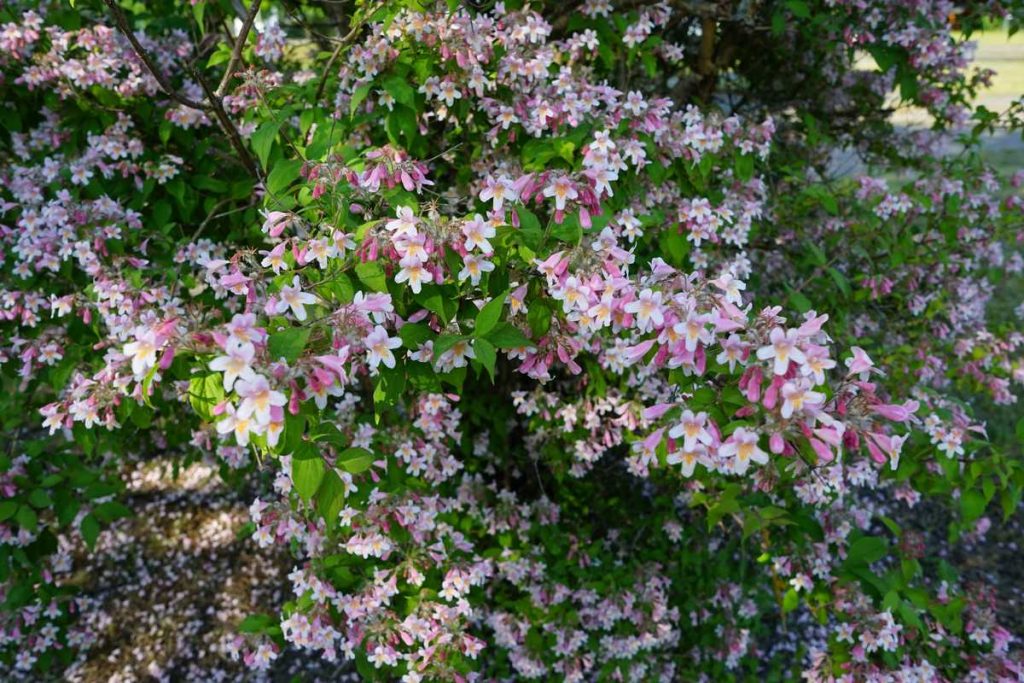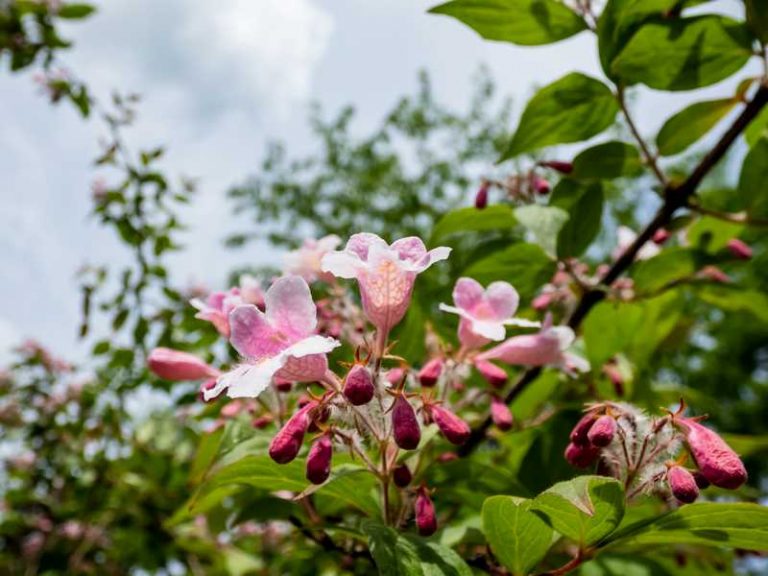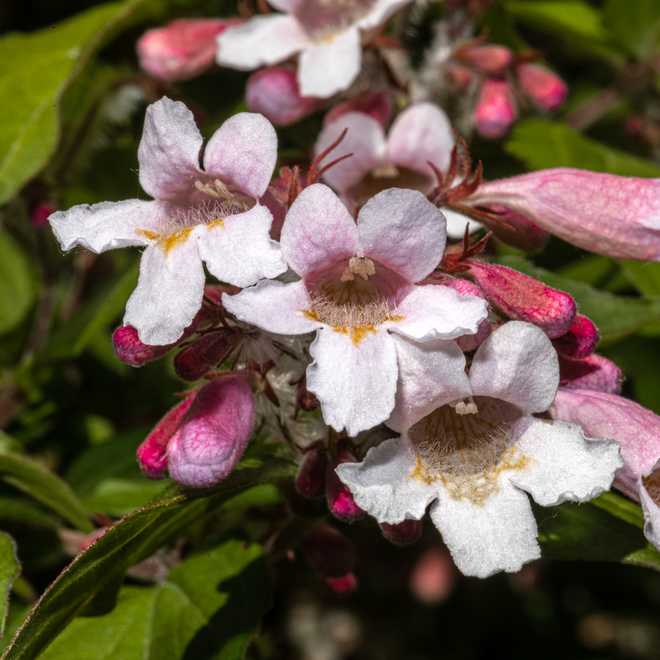
Less common than other spring-flowering shrubs, Kolkwitzia amabilis is better known by its other name Beauty bush . A nickname fully deserved as this shrub is covered with many small elegant flowers for 15 days, in May and June.
What there is to know :
Botanical name : Kolkwitzia amabilis
Common name : Beauty bush, kolkwitzie, kolkwitzia
Family : Caprifoliaceae
Origin : Western China
Height x spreading : The beauty bush reaches 2.5 m to 3 m in height but its spreading is often less important because it takes on an erect bushy appearance and its branches generally arch only at their end. Under good growing conditions, its growth is medium to fast.
Foliage : Deciduous. The many oval leaves, slightly toothed, downy and ending in a point, are green. If the beauty bush is grown in the sun, they take on beautiful purplish-red colors in the fall.
Wood : The bark comes off in strips, so it is decorative in winter when the shrub has lost all its leaves.
flowers: Kolwitzia flowers quickly, even when young. The many small bell-shaped flowers appear in May or June and last about 15 days. They resemble those of the snapdragon by their pink color and their yellow throat, are slightly fragrant and melliferous. This magnificent flowering lasts about 15 days.
Fruits : The grey-brown fruits of Kolkwitsia amabilis contain translucent seeds with no decorative value.
Exposure : In the sun, flowering is more generous and the autumn colors of the leaves are more intense.
Soil : Any good, rich, well-drained garden soil. Rather tolerant, the beauty bush adapts to slightly calcareous soil.
Hardiness : Robust, the Kolkwitzia resists cold down to -25°C.
Where to plant a Kolkwitzia amabilis?
The beauty bush needs to grow and flower generously in a very sunny position , in rich , fertile and well-drained soil.
Easy to grow and very tolerant, Kolkwitzia grows even in calcareous and slightly clayey soils.
You can use it isolated on a beautiful lawn to take advantage of its spectacular flowering or in a bed, in the company of nepetas or perennial geraniums . It tolerates pollution and is therefore very suitable for a city garden.
The beauty bush is also very easy to grow in a pot : choose a large container because it has trouble growing in a small pot.

When to plant a kolkwitzia, how?
Preferably, plant your young kolkwitzia amabilis at the end of autumn or in winter , outside the frost period. The shrub will thus have time to take root well before the dry spell of the first summer.
Plant a beauty bush purchased in a container: its recovery will be faster.
If your soil is heavy, drain with sand or gravel otherwise your shrub may die in winter in the event of excess humidity .
Beauty bush care
Watering : Water your shrub the year it is planted. Once established, the kolkwitzia tolerates fairly dry soil in summer. Inflows of water are therefore only useful in hot weather.
Fertilizer : The beauty bush is quite greedy. Bring it regular compost at the foot and a shrub fertilizer twice a year, in early spring and fall.
Diseases and pests : Robust, the kolkwitzia is generally not very sick. The young shoots are sometimes very damaged by the cold and the late frost, but they are quickly replaced by new ones.

When and how to prune Kolkwitzia?
The kolkwitzia naturally flowers a lot: it is therefore not necessary to prune the beauty bush to improve its flowering .
Nevertheless, regular pruning , carried out just after flowering , in June or July , makes it possible to maintain a beautiful silhouette and a healthy shrub.
At the beginning of summer, in an old Kolkwitzia amabilis :
- Remove a third of the oldest branches by trimming them to ground level.
- Also remove small branches and those that cross inside the shrub because they will flower less.
When to take cuttings from Kolkwitzia?
Easy to make at the end of summer ( August and September ), the Kolkwitzia cutting makes it possible to quickly obtain a bush of identical beauty to the mother plant.
- Choose a branch that has not flowered in order to prepare heeled cuttings, that is to say with a piece of older stem at their base.
- Remove all bottom leaves.
- Put them to root in a terracotta pot filled with a mixture of equal parts garden soil, potting soil and sand.
- Moisten the soil, then cover with a bell or half a bottle to keep stewed. Keep the pot in the shade for a few weeks.
- In winter, move it under a cold frame to protect from freezing.
- In the spring, repot the rooted cuttings in individual pots so that their roots grow stronger. You can plant them in the ground the following fall.

Notable Kolkwitzia varieties
The genus Kolkwitzia has only one species, Kolkwitzia amabilis, and very few varieties.
Kolkwitzia amabilis Pink Cloud is the most widely grown beauty bush. Its many fluffy flowers are light pink, with a yellow throat. This variety comes from the English garden of Wisley.
Kolkwitzia amabilis Rosea ,rarer, has dark pink flowers on the outside, light pink on the inside.
Kolkwitzia amabilis Maradco ,with pretty yellow foliage and light pink flowers
Did you know ?
Kolkwitzia amabilis was introduced to Europe in 1901 by Ernest Wilson. Its name is dedicated to the professor of botany Richard Kolkwitz.
